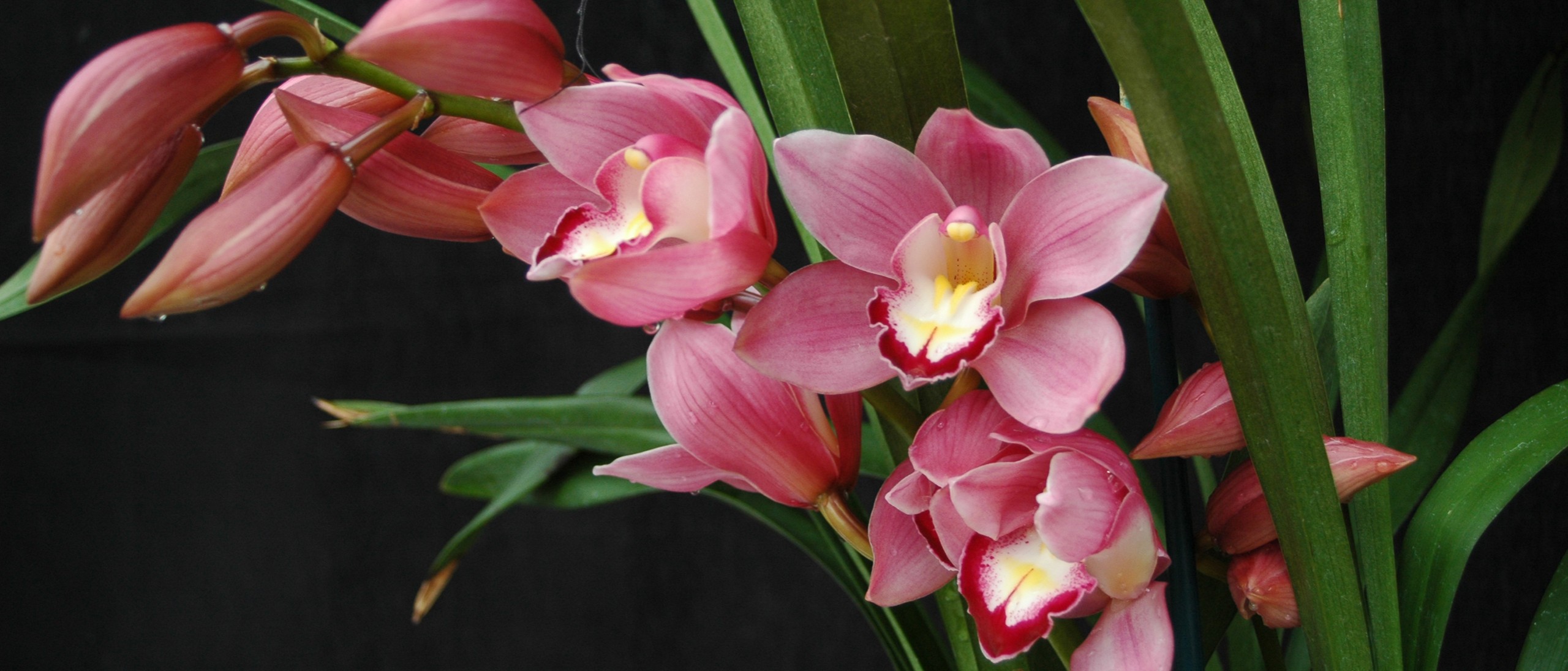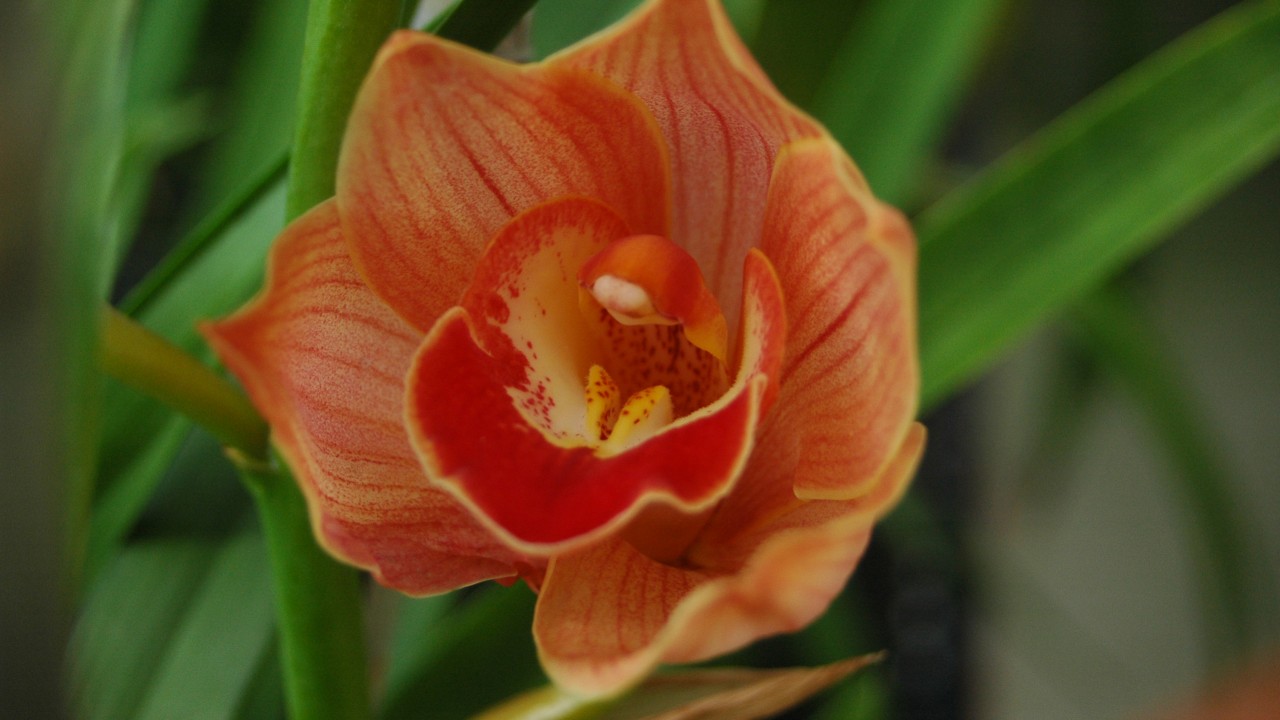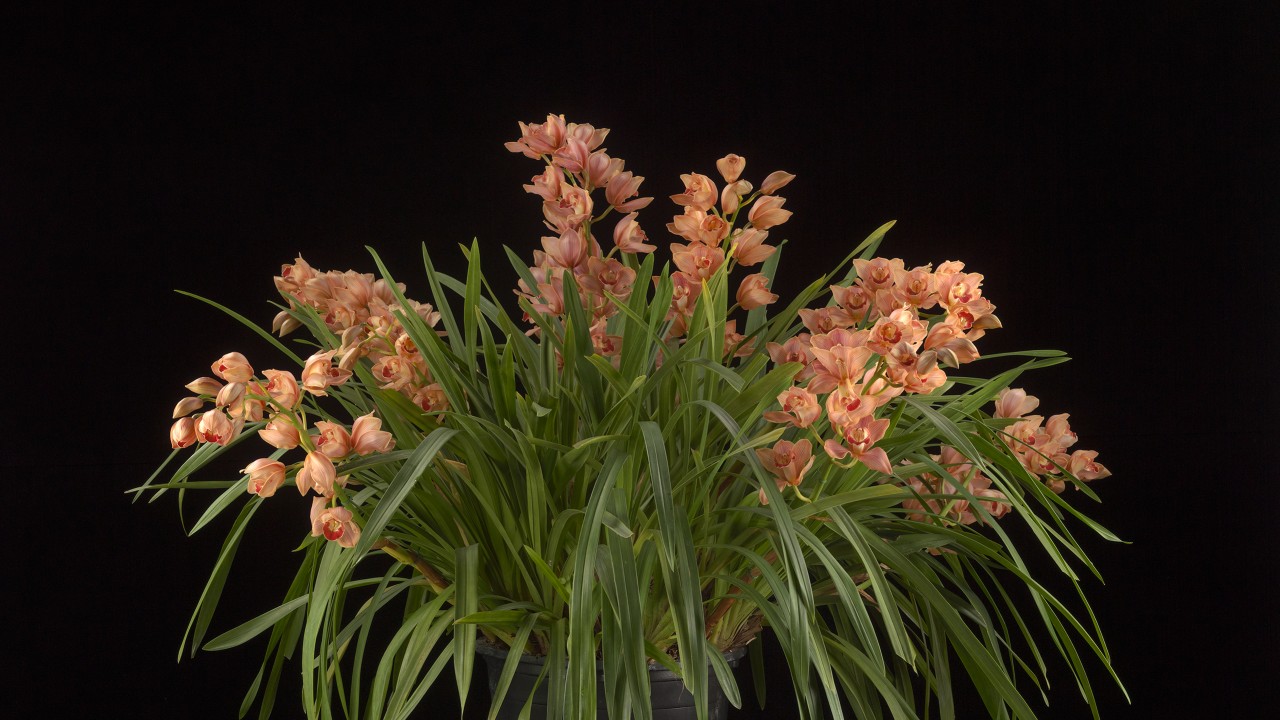
Care of Cymbidium
Common Name: Boat Orchid
Scientific Name: Cymbidium (sim-BID-ee-um)
Cymbidiums are recognized by their plentiful, strap-like foliage and dense clusters of long-lasting flowers. Popular as cut flowers or grown as an ornamental, Cymbidiums are semi-terrestrial orchids from tropical and subtropical Asia and parts of Australia. These orchids come in two types: miniature and standard. A standard Cymbidium can have flowers up to 5” wide, but needs cooler temperatures to flower. A miniature Cymbidium has flowers half this size, but still just as beautiful, and can flower at slightly warmer temperatures.
Where should I put my orchid?
Cymbidiums are light-loving orchids. The best place for them indoors is near an east facing window or a slightly shaded south window. Cymbidiums need a temperature difference between night (50-60° F) and day (about 75° F) to bloom well. Miniature Cymbidiums can flower at temperatures 5-10 degrees warmer than this. Light, golden-green leaves mean the plant is getting enough light, dark green leaves mean not enough, and slightly red leaves indicate it is getting too much. While Cymbidiums like a lot of light, they can sunburn. Just like wild Cymbidiums that receive some partial shade from the leaves of trees they grow under, an indoor Cymbidium should not receive direct sun.
What about humidity?
Cymbidiums like moderate humidity, around 50%, especially when they bud or are about to flower. If your home is too humid, provide good air circulation. If it is not humid enough, use a small humidifier or place a tray of pebbles filled with water under the plant.
How much water should I give it?
Cymbidiums like to be moist. In the spring and summer, consistently water these orchids but do not waterlog them. Reduce watering from the late summer through winter until the potting mixture is barely damp to the touch during the winter months.
My orchid has finished blooming – now what?
Cymbidiums will not rebloom from the same stem. Once your Cymbidium has finished flowering, cut the stem back to its base.



